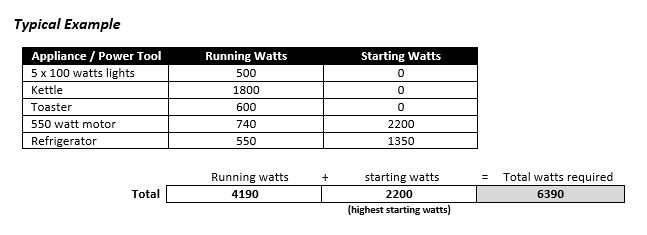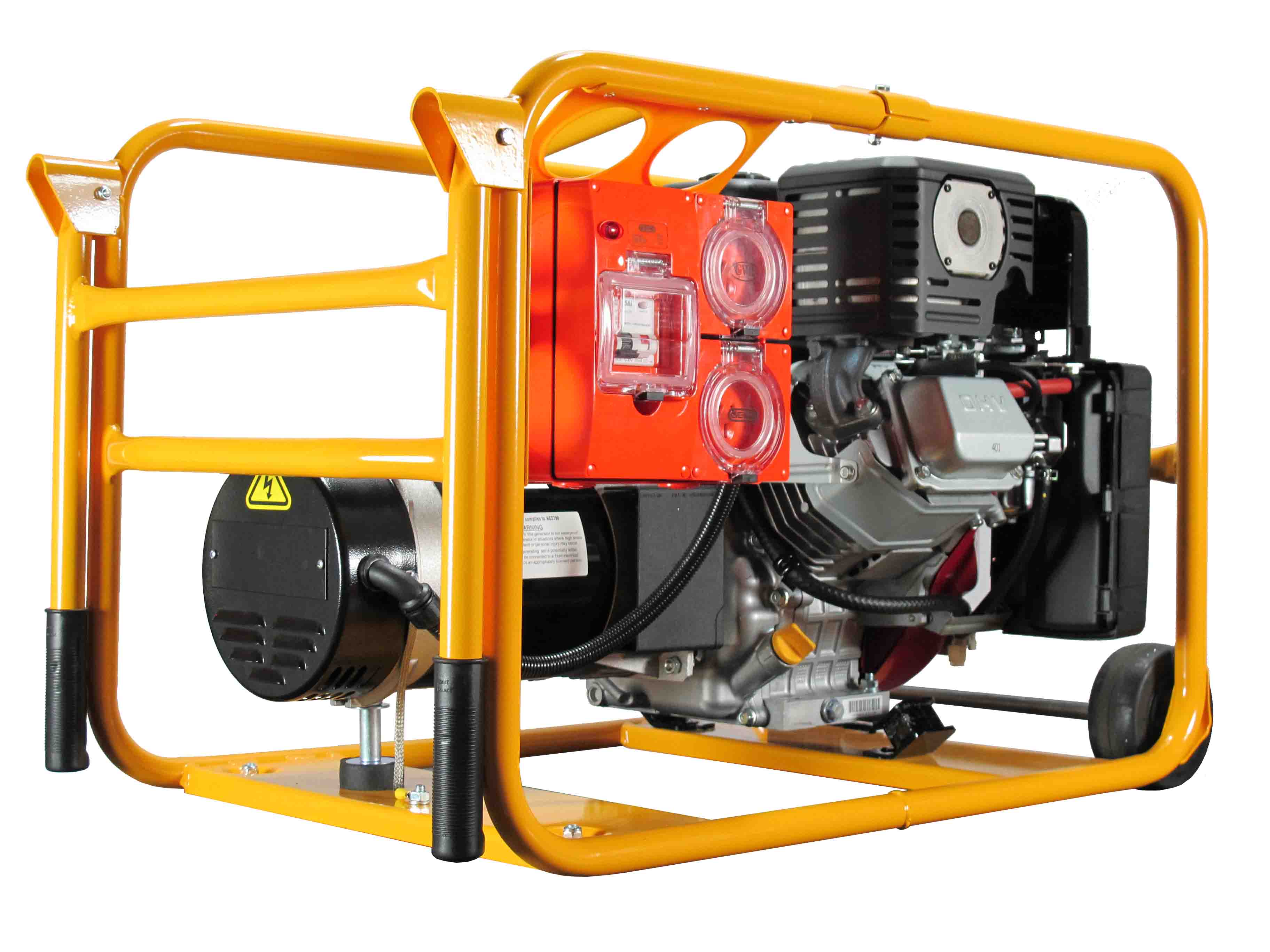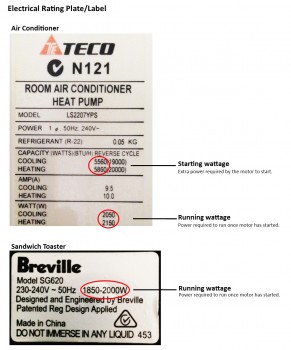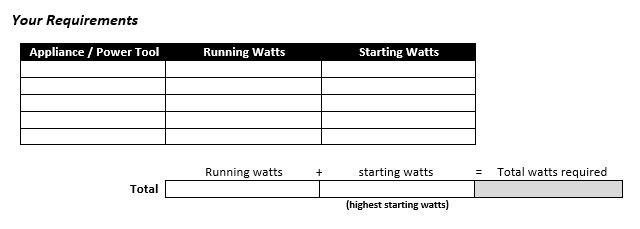Choosing the correct generator to suit your requirements can be tricky, but it doesn’t need to be.
The ideal Generator is one that is correctly matched to power all the electrical equipment you would like to run at the same time.
If you choose a generator which is too big it will not necessarily run as efficiently as the correctly matched generator and will also be more expensive to purchase.
If you choose a generator which is too small, some of your electrical equipment may not give its maximum output and at times its lifespan may be reduced.
Here’s all you do-
All electrical appliances and motors, should have (by law), an electrical rating plate with the power and electrical requirements shown on it.
- If the appliance has a rating plate showing:
Watts – If this is shown as kW multiply x 1000 which = Watts
HP – To return this old measure to Watts multiply x 746 = Watts
- If there is no rating plate showing the power, please refer to the ‘Average Watts Table’ below, showing typical appliances that you can compare to yours and select and ‘Average Watts’ figure.
For standard Industrial Electric Motors, the power shown on the motor rating plate does not take into account the motor efficiency or starting load, and therefore – Look up the chart below for Electric Motors and use the ‘Average Watts’ figure shown for the particular standard size motor indicated.

Therefore, for example a PH080 (Honda Engine) or PB080 (Briggs & Stratton, Vanguard Engine), which has a ‘Real Power’ capacity of 6,800 Watts would be ideal, and it even has an additional 6% extra capacity.
Now all you have to do is Add up!
Just add up all the ‘Average Watts’ for every appliance or motor that you are going to run at any one time, and choose the biggest combination of loads.
Then … just pick a Generating Set with watts equal to or slightly greater than your total ‘Average Watts’.
We also have a tool calculator on our website that can do the calculation for you https://powerlite.com.au/what-size-generator-do-i-need/
If you are not very technically minded, and do not have confidence in your choice, either from our Master Chart, or from these calculators, do not hesitate to ring us on 02 9912 5000 and we will be happy to work it out for you.
Please note: a generator should never be operated at its maximum wattage capacity for more than 30 minutes. If you need to operate a generator for more than 30 minutes, it is recommended you use only 90% of the maximum wattage. Generators at all times need to be in a well ventilated area and power points should never be overloaded.
Download our Average Watts Table
Electric Motors
The average Watts that have be used to size a generating set takes into account the power lost within the electric motor, the extra power required by the motor each time it is started and the additional power that the generator can provide above its normal rating.
/
The Watts shown here assume that the motor will, once started, be required to operate at its full output power continuously.
Download our Electric Motors Table
Just a Word of Caution
The above explanations and calculations are estimates and have been simplified and generally cover most commonly encountered domestic and light trade requirements. For correct wattages please check the specific power tool or appliance. Because of the varying nature of many electric motor driven devices, we would recommend that you contact us where you feel that your circumstances may be different.


